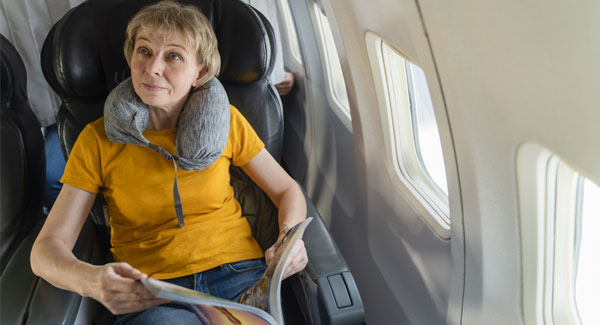Take the Pain and Stress Out of Navigating the Airport
Follow these seven tips to make airport travel easier when you have arthritis.
Getting from curbside to your seat on the plane is often the most trying part of the trip, especially if you have arthritis. These tips can make it easier to get through the airport.
Lighten Your Load
Use a waist or fanny pack to carry keys, wallet or other necessities. Don’t pack so many items that the load becomes too heavy.
Ask Your Carrier for Assistance
When you book your reservation, make arrangements with the airline for wheelchair assistance to your gate. Air carriers are legally required to transport those who ask, via wheelchair or electric cart, from curbside to your gate.
Speak directly With the Officers at Security Checkpoints
“If a passenger has a disability or medical condition that may affect screening, he or she should inform a Transportation Security Officer, or TSO, before screening begins,” says Lorie Dankers, Transportation Security Administration (TSA) spokeswoman. She advises carrying a doctor’s note or TSA notification card. It won’t exempt you from screening, but may “improve communication and help travelers discreetly notify TSOs of their conditions,” she says.
Disclose Carry-On Liquid Medications at Checkpoints
According the the TSA, “Medication in liquid form is allowed in carry-on bags in excess of 3.4 ounces in reasonable quantities for the flight. It is not necessary to place medically required liquids in a zip-top bag.” You will need to declare these items for inspection at the checkpoint. And it may be easier to go ahead and put them with your other liquids in a 1-quart zip-top bag anyway. Officers may need to open these items to conduct additional screening.
Be Aware of Your Security Screening Options
Airport body scanners, known as advanced imaging technology (AIT), originally got a bad rap for breaching privacy when introduced in 2007. Since then, TSA has taken steps to protect passenger privacy, and the scanners may be a good choice for those with joint replacements, sensitive joints or other sensitive-to-the-touch areas in which even the lightest pat-down from a TSO could cause pain. According to the TSA, “passengers with joint replacements or other medical devices that would regularly alarm a metal detector often prefer this technology because it is quicker and less invasive than a pat-down.” AIT screening, now used in more than 200 airports, does require passengers to walk completely unassisted and raise their hands above their heads. If you have limited mobility and are unable to do so, or you simply prefer an alternative screening method, you will require or may request a pat-down.
Pre-board if You Require Extra Time or Assistance
Under the Air Carrier Access Act, airlines are required to offer pre-boarding to disabled passengers, but they aren’t required to announce it. If you need to pre-board, tell the gate agent, and make yourself very visible so they don’t forget you.
Call TSA Cares for Security Screening Assistance
The TSA Cares toll-free hlep line (855-787-2227), which serves travelers with disabilities and medical conditions, provides information about screening policies and what to expect at security checkpoints. Call 72 hours prior to traveling so checkpoint support with a TSA customer service manager can be arranged, if needed.
Stay in the Know. Live in the Yes.
Get involved with the arthritis community. Tell us a little about yourself and, based on your interests, you’ll receive emails packed with the latest information and resources to live your best life and connect with others.


